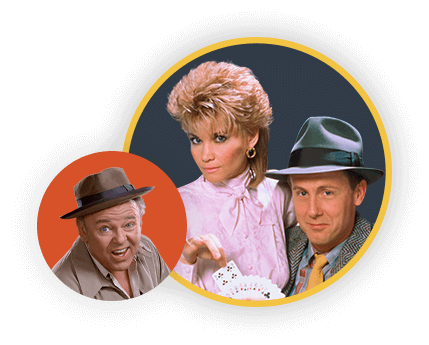5 things you might not know about tinsel

Christmas in the 1950s and 1960s was much shinier. Aluminum Christmas trees — illuminated blue, green and red by a rotating color wheel — sparkled in American living rooms. The trendy fake trees were a Midwestern creation, first manufactured in Chicago in 1955. They were all the rage for a decade, as the natural evergreen in 1965's A Charlie Brown Christmas is credited with killing off the trend.
The decoration of choice for these twinkling Tannenbaums, of course, was tinsel. Perhaps no holiday decoration better captures a retro Christmas than tinsel. Many of us share memories of draping strands of the thin, reflective strips with the family. Then again, some of us had to pick the strands off one by one to save for the next year. The Cunningham's Christmas tree on Happy Days was covered in the silvery tinsel.
Perhaps you nostalgists out there still use the stuff. However, it is not the same material of our youth. In fact, it has changed often over the centuries. Yes, it's that old. Here are some fun facts about the vintage decoration.

It was invented as early as 1610
It should come as no surprise that Germany, Nuremberg specifically, the country that created the Christmas tree, also dreamt up tinsel as an adornment. What might surprise you is just how long ago it was. Tinsel dates back to the Renaissance, the word itself coming from the French estincelle ("spark"). The Oxford English Dictionary dates the usage of "tinsel" as "very thin strips of shiny metal" back to the 1590s. It's unknown which genius thought to drape some on a fir tree. Some other historical accounts only trace Xmas tinsel back to the 1840s.

It was originally made of silver
Those 17th-century Germans certainly did not skimp when it came to tinsel. While using real silver to make tinsel sounds fancy, anyone with silverware will tell you there is a downside, especially when you put the stuff near candle flame — it tarnishes, turns black. As rubbing strands of tinsel with Tarn-X is time consuming, if not impossible, eventually the material was switched to aluminum. Those purists out there can still buy silver tinsel from its homeland, for about $18 a box.

The popular version of the 20th century contained lead until 1972
As you can see in a newspaper article from November 1972, the FDA deemed tinsel an "unnessary risk to children with symptoms of lead poisoning" in August 1971. Manufacturers had switched to lead foil in the 20th century for tarnish-proof sparkle and weight. However, it was off the shelves by Christmas 1972. Today, the stuff is made from far lighter plastic or mylar, if you're wondering why it hardly hangs like it used to.

The term "Tinseltown" only dates back to 1972
Oddly, the nickname "Tinseltown" only dates back four decades, not to the silver age of Hollywood. Some eytmology sites trace the moniker back to 1972, while others claim 1975. For what it's worth, we were able to find a usage of the term in a 1972 issue of The Chicago Tribune, in an article about The Who's rock opera Tommy. Is it only coincidence this coincides with lead tinsel being deemed a health hazard? In modern usage, we tend to forget that "Tinseltown" was meant to be derogatory. Now that we have warm and fuzzy nostalgia feelings for tinsel, the term does not seem so cruel.

Brite-Star, a leading manufacturer of tinsel, has made enough to reach the moon and back
Philadelphia-based Brite Star is responsible for about 80% of the tinsel on the market in U.S., according to The Wall Street Journal, and started making the strands in the mid-1950s. The Brite Star tinsel is 1/16th of an inch wide and 18 inches long. The Kinderman family, which owns the company, claims to have churned out enough tinsel to reach the moon and back, which is about 1.6 billion strands by the math.




